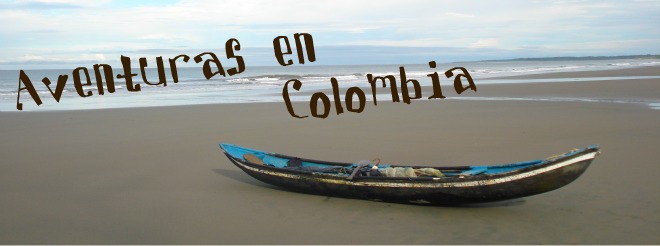
Thanksgiving is a time to be with family and friends and give thanks for the good things in life. This Thanksgiving my friend and 9th grade colleague, Tara, and I traveled to visit some of the oldest inhabitants of Colombia - or what they left behind, at least.
 The town of San Agustín and the surrounding area, in the Huila department southeast of Cali, is home to several hundred funerary monuments left behind by some Pre-columbian civilization. Think Aztecs, Mayans, and Incas but a smaller, less successful population.
The town of San Agustín and the surrounding area, in the Huila department southeast of Cali, is home to several hundred funerary monuments left behind by some Pre-columbian civilization. Think Aztecs, Mayans, and Incas but a smaller, less successful population. Not much is known about these monuments or the people who left them behind except that many of the remains and artifacts (pottery and gold) date back to BC. Archeologists believe there could be many more undiscovered tombs and statues under the ground and that only approximately ten percent of the area has been explored.
 Many sites have been unearthed accidentally and subsequently grave-robbed - our horse backed tour guide included. (Luis Carlos actually brought us back to the house he shares with his sister and other assorted family to show us his exquisite finds. Both Tara and I were tempted to buy a couple, not as Christmas presents, as was suggested, but to donate (rescue) to a museum here in Colombia. The going rate for an ancient tomb-robbed pot? $150. Alas, these precious artifacts remain in a tattered cardboard box under a bed.
Many sites have been unearthed accidentally and subsequently grave-robbed - our horse backed tour guide included. (Luis Carlos actually brought us back to the house he shares with his sister and other assorted family to show us his exquisite finds. Both Tara and I were tempted to buy a couple, not as Christmas presents, as was suggested, but to donate (rescue) to a museum here in Colombia. The going rate for an ancient tomb-robbed pot? $150. Alas, these precious artifacts remain in a tattered cardboard box under a bed. Getting to San Agustín is not an easy or comfortable journey. After a two hour bus ride to the "white city," Popayán, directly south of Cali, another bus takes you inland for five hours up and down curvey, rocky, unpaved, narrow roads. I generally don't get motion sick, but this ride was pushing my limits.
Getting to San Agustín is not an easy or comfortable journey. After a two hour bus ride to the "white city," Popayán, directly south of Cali, another bus takes you inland for five hours up and down curvey, rocky, unpaved, narrow roads. I generally don't get motion sick, but this ride was pushing my limits.  In the end, it was worth it. (On the way there I thought "These statues better talk and dance for what it's taking to get here!") Aside from the archeological sites dotting the countryside, Tara and I were also taken to see the tallest waterfall in Colombia, La Cascada Bordones, as well as Colombia's "most important" river, the Ria Magdalena, which begins in Huila and ends in the Caribbean near the city of Barranquilla. We were taken to El Estrecho, the narrowest point in the entire river at only 2 meters across.
In the end, it was worth it. (On the way there I thought "These statues better talk and dance for what it's taking to get here!") Aside from the archeological sites dotting the countryside, Tara and I were also taken to see the tallest waterfall in Colombia, La Cascada Bordones, as well as Colombia's "most important" river, the Ria Magdalena, which begins in Huila and ends in the Caribbean near the city of Barranquilla. We were taken to El Estrecho, the narrowest point in the entire river at only 2 meters across.Another highlight of our trip was staying in the welcoming home and hostal of Mario and his wife, Janeth. Located on the famous cobble stoned Calle Loceria, the first street in San Agustín, the dormitory and family-style lodging catered to travelers who didn't mind getting to know each other. Unfortunately we were the only visitors at the moment, although the town gets plenty of European and Australian visitors, so we only got to know the charming owners, which was not a bad thing. Mario was full of stories and jokes and Janeth always had a pot of coffee or fresh lemonade ready and breakfasts that could easily feed ten. It's nice when you're traveling to feel like you're at home.
And that, in the end, is what a good Thanksgiving vacation is all about.











